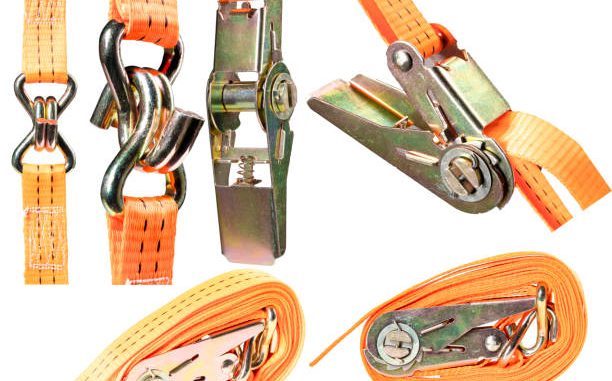
Ratchet Tie Down Straps are a crucial tool for securing loads when they are being transported. However, each year, these straps get damaged because of misuse and storage.
The strap’s hooked end should be secured to a stable anchor to the truck’s trailer or bed. The ratchet handle must be turned back and forth to secure the strap.
Instructions
Ratchet straps are used by OTR truckers as well as professional movers to secure cargo onto your flatbed trailer, moving van or pickup. These straps are unmatched in their strength and safety, they can also be used to stop loads shifting in transportation.
A strap called a ratchet belt is an elastic strap that has been fabricated with tie-down hardware. Hardware is made up of fittings at the ends of the strap that permit it to be tied to anchor points, and looped over or around cargo or equipment. It also has a way to tighten and secure in place.
If you’re ready to put on your ratchet strap, first allow it to fully open in its flat position. In order to unlock the ratchet strap first push the lever that releases it.
Once the strap is taut, you can open and close the ratchet to the point that it’s secure but not too tight. You can tell whether you’ve overtightened the strap by putting your finger between the strap and the object being secured. After you’re happy, flip the ratchet back to its closed position, and then press it shut until you can hear it snap.
Securing Cargo
It doesn’t matter if you’re hauling ATVs or lumber on a flatbed, the goal is to secure your cargo and stop it from moving in the course of transport. The best method for accomplishing this is with ratchet straps that are properly designed to handle the load. Determine the maximum workload of a ratchet belt multiplying its breaking strength by three.
Position both ends of the tie down straps through anchor points like rails, etrack or other secure anchor points. Then you can pull the end that is free of the strap up through the open slot in the ratchet mandrel. The free end of the strap should not be long enough because it could cause the ratchet jam when tightening.
When the free end of your strap is in position then pump the ratchet handle to eliminate the excess slack, and then begin pressing it down. Keep a finger on the handle of the ratchet to know when you’re reaching the maximum load that you can handle and when you have to stop. The strap that is tightened too much can cause damage to your cargo and damage to the ratchet.
Proper Use
Ratchet straps for flatbed trailers are essential accessories for securing the weight of cargo. It is, however, easy to slip up with these straps, which could cause damage to cao chang hang your load or even the ratchet itself.
Check the webbing of the ratchet and handle of the ratchet for signs of damage before making use of it. Apply WD-40 or dry silicone spray to the handles of the ratchet to make them more comfortable.
Then, you’ll be able to thread the end of the ratchet strap through the slot in the mandrel. Be sure that there is no slack. Once the webbing is threaded properly then close the ratchet handle and turn it upside down to close the strap to the load.
Repeat this process until the tension of the ratchet strap is at ideal tension. Do not over-tighten it as it could cause damage to your cargo or the mechanism that operates the ratchet. Use ratchets with the right end fittings. These include flat hooks or chains. Make sure your ratchet belt is kept out of direct sun light when storing it. UV light can degrade the synthetic webbing over time.
Tie-down Strap Safety Tips
Like all tools and equipment, it’s essential to check ratchet straps on a regular basis to look for signs of damage and wear. Moisture is an issue for ratchet straps, as it could cause mildew and mold as well as reduce the strength of the polyester tie-down webbing these straps are made of.
A belt that is changing color could be an indication of deterioration. The UV rays of the sun could cause the webbing of these straps to weaken. Keep them out of direct sunlight.
Also it is recommended to lubricate your ratchet straps periodically is also a good idea. This will allow the equipment to move easily and prevent corrosion. Be sure to apply dry silicone spray for this, since solvents such as WD-40 can cause harm if they come into contact with the webbing.
Ratchet Strap Tightening Guide
The best method to ensure that the ratchet straps operate properly and last longer is to keep them maintained correctly. Ratchets work better if you clean them and lubricate them regularly. It is also essential to keep them in a space which is dry and away from sharp edges or objects which could cause harm.
There are numerous alternatives when it comes down to ratchets straps. You can choose based on the cargo security needs. There are endless loops, etrack fittings, flat hooks, wire hooks and S hooks. The right fitting at the end will help to keep your ratchet straps secure and secure while traveling.
When you are choosing ratchet straps, look for ones that have an easily readable working load limit label on the straps. In many states, it is illegal to use a strap that does not have a tag. You could face fines or even lose your job as if you did. Pick ratchets with a strength enough to hold the load they were made to hold.
